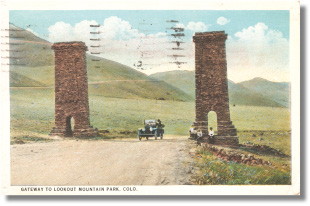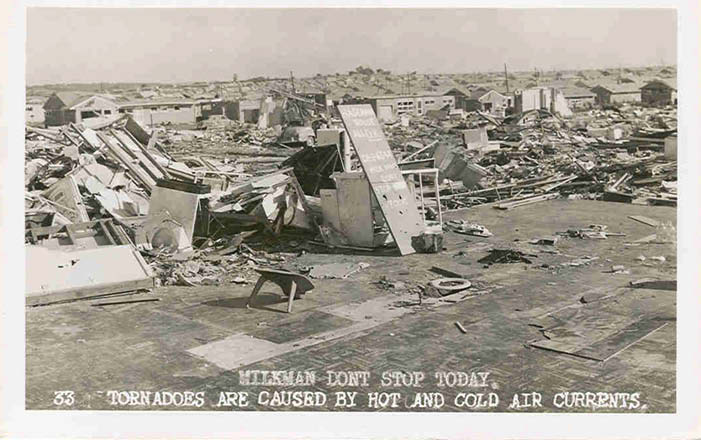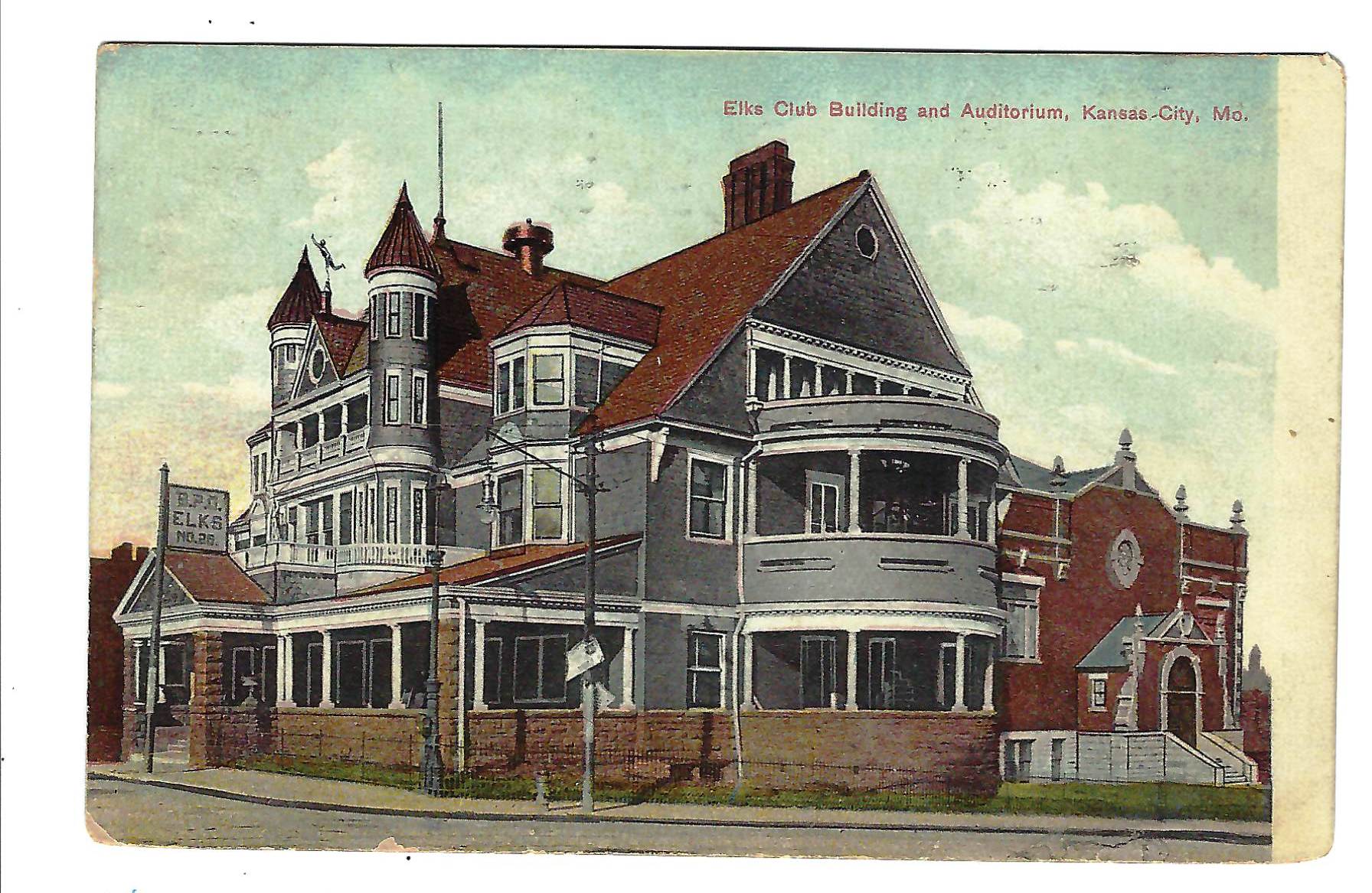
This week’s postcard is published by Johnny Baker Postcards of Denver, Colo., and is entitled: Gateway to Lookout Mountain Park, Colo.
The description on the back of the card reads,After passing over the eight mile concrete road between Denver and the little town of Golden, one approaches two huge stone pylons built of rough hewn gray granite. This imposing gateway is the entrance to Lookout Mountain Park, and marks the foot of the famous Lariat Trail.
This gateway and a similar one to the one at the Bear Creek entrance to Denver Mountain Parks were presented to the city of Denver by Finlay L. MacFarland, one of Denver’s prominent automobile dealers and a member of the Denver Mountain Park’s Advisory Commission.
Lookout Mountain is also known for being the grave site of William F. Buffalo Bill Cody, the long-time Indian scout and Wild West showman. Controversy still swirls around Cody’s wish to be interred atop Lookout Mountain versus being laid to rest in the town in Wyoming that bears his name.
Cody died in Denver in January of 1917. His latest will dictated that he be buried atop Lookout Mountain, between Colorado’s mountains and the great plains. The road to the summit of the mountain was impassable at the time, so the Denver undertaker charged with carrying out Cody’s burial kept his body on ice for six months.
The June funeral service drew thousands to the route atop Lookout Mountain. The laying of his coffin in the ground, however, was not the end of the matter. Rumors kept cropping up that Wyoming relatives were coming for his body, as were neighbors from his ranch in Nebraska. Consequently, the Colorado National Guard was ordered to trundle one of its World War I tanks up the mountainside, where it was positioned at the grave to protect the body.
Cody’s wife died in 1921 and is interred next to her husband on the mountain. Both bodies were then entombed in tons of concrete so as to ensure their staying put.


















